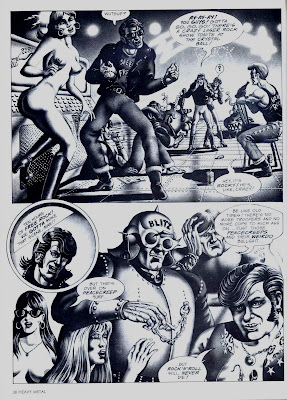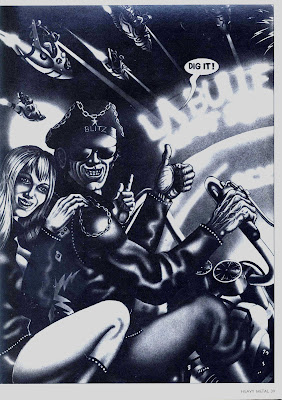'Sabre' issue 1
Eclipse Comics, August 1982'Sabre' was first published in 1978 as a 38-page black-and-white graphic novel by Eclipse, an independent comic book publisher. The book is considered by some to be the first 'graphic novel' ever to be released, although I would argue that Gil Kane's 'Blackmark', from 1971, was actually the first work to merit the title of a graphic novel.
Sabre represented an effort by writer Don McGregor to produce material not stifled by the restrictions of the Comics Code, or the heavy hands of the senior editorial staff at the major publishers.
In 1982, Eclipse comics released the graphic novel in issues one and two of Sabre, a newly launched, full-color comic book.
Another 12 issues of original material followed, before the series ceased in 1985 with issue 14.
Unfortunately, as far as I'm concerned, McGregor wasted too much time presenting himself as a talented wordsmith battling the ignorance of the System, and too little time actually being a good writer.
Much as he did with the Killraven series for Marvel, McGregor buried Paul Gulacy's exceptional artwork under turgid, overwrought prose. Even by the standards of comic book writing of the 70s and 80s - in which prolixity was commonplace - McGregor showed a signal lack of restraint.
Still, it's worth taking a look at the 1980s run of 'Sabre', for every now and then, when McGregor allowed Gulacy's illustrations to take center stage, the book rose above and beyond the usual.
The first few pages of Sabre No. 1 introduce us to the dystopian state of the US in 2020 AD:
Here's a nice example of what Paul Gulacy could do when given a text-free page with which to work:
Unfortunately, too often Gulacy's artwork had to maneuver around large chunks of text:
My synopsis of issue two / part two of the original 'Sabre' will be posted next month.










































































